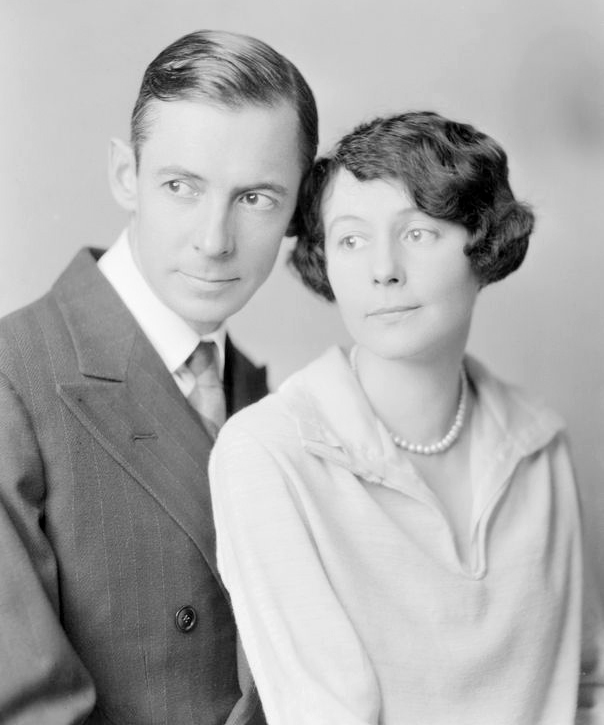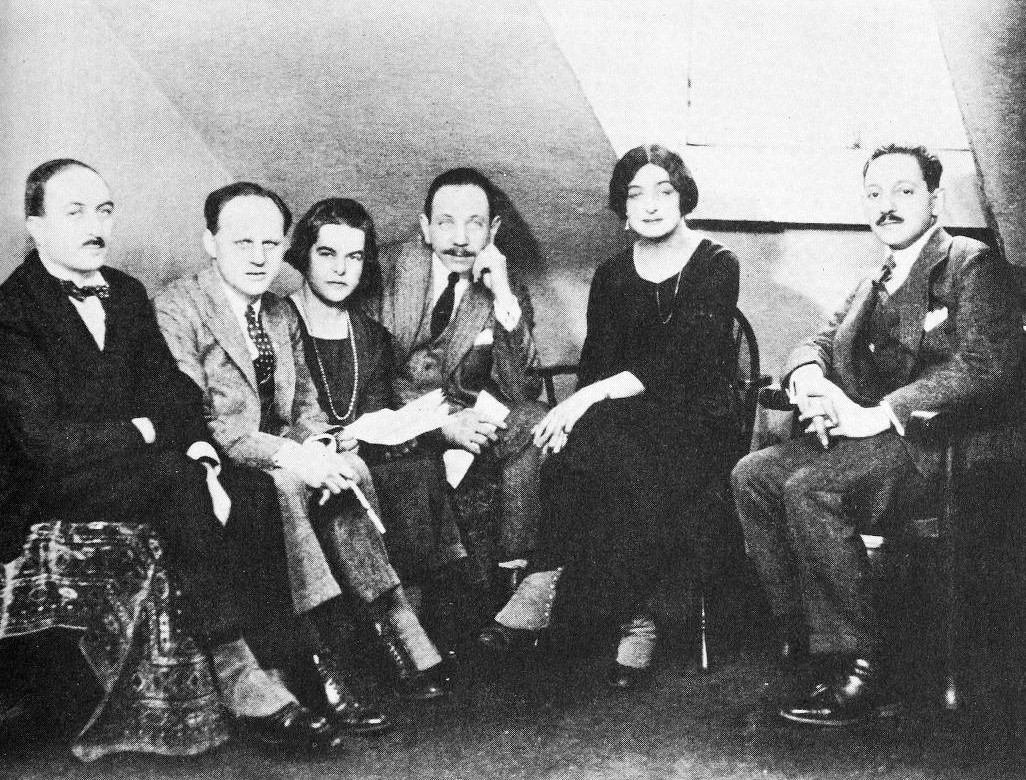|
Dorothy Heyward
Dorothy Heyward (née Kuhns; June 6, 1890 – November 19, 1961) was an American playwright. In addition to several works of her own, she co-authored the play '' Porgy'' (1927) with her husband DuBose Heyward, adapting it from his novel by the same name. Their work is now known best in its adaptation as the opera ''Porgy and Bess'' (1935), with music by George Gershwin. Early life and education She was born in Wooster, Ohio, as Dorothy Kuhns, and lived in New York, Puerto Rico, and Washington, DC, throughout her childhood years. She was interested in literature from an early age and started writing plays. After graduating from high school, she attended Harvard University, where she studied to become a playwright. In 1922, Kuhns attended MacDowell Colony, where she met DuBose Heyward. They married in September 1923 and she changed her name. Career as a playwright In 1924, Heyward wrote her first play, ''The Dud'', for which she won a Harvard Prize. ''The Dud'' was later r ... [...More Info...] [...Related Items...] OR: [Wikipedia] [Google] [Baidu] |
Theatre Guild
The Theatre Guild is a theatrical society founded in New York City in 1918 by Lawrence Langner, Philip Moeller, Helen Westley and Theresa Helburn. Langner's wife, Armina Marshall, then served as a co-director. It evolved out of the work of the Washington Square Players. History Its original purpose was to produce non-commercial works by American and foreign playwrights. It differed from other theaters at the time in that its board of directors shared the responsibility of choosing plays, management, and production. The Theatre Guild contributed greatly to the success of Broadway from the 1920s throughout the 1970s. The Guild has produced a total of 228 plays on Broadway, including 18 by George Bernard Shaw and seven by Eugene O'Neill. Other major playwrights introduced to theatre-going Americans include Robert E. Sherwood, Maxwell Anderson, Sidney Howard, William Saroyan, and Philip Barry. In the field of musical theatre, the Guild has promoted works by Richard Rodgers, teame ... [...More Info...] [...Related Items...] OR: [Wikipedia] [Google] [Baidu] |
Charleston Renaissance
The Charleston Renaissance is a period between World Wars I and II in which the city of Charleston, South Carolina, experienced a boom in the arts as artists, writers, architects, and historical preservationists came together to improve and represent their city. The Charleston Renaissance was related to the larger interwar artistic movement known as the Southern Renaissance and is credited with helping to spur the city's tourist industry. History In the Antebellum era, Charleston was one of the ten largest cities in America. The Civil War destroyed the city's prosperity, and the economic after-effects lingered through the Reconstruction era into the early 20th century. Beginning around World War I, however, the city experienced a renaissance in the arts as the local art community worked on bettering their city and representing it in various media. The Charleston Renaissance contributed to the rise of such art institutions as the Gibbes Museum of Art (which grew out of the Caroli ... [...More Info...] [...Related Items...] OR: [Wikipedia] [Google] [Baidu] |
1961 Deaths
Events January * January 3 ** United States President Dwight D. Eisenhower announces that the United States has severed diplomatic and consular relations with Cuba (Cuba–United States relations are restored in 2015). ** Aero Flight 311 (Koivulahti air disaster): Douglas DC-3C OH-LCC of Finnish airline Finnair, Aero crashes near Kvevlax (Koivulahti), on approach to Vaasa Airport in Finland, killing all 25 on board, due to pilot error: an investigation finds that the Captain (civil aviation), captain and First officer (civil aviation), first officer were both exhausted for lack of sleep, and had consumed excessive amounts of alcohol at the time of the crash. It remains the deadliest air disaster to occur in the country. * January 5 ** Italian sculptor Alfredo Fioravanti marches into the U.S. Consulate in Rome, and confesses that he was part of the team that forged the Etruscan terracotta warriors in the Metropolitan Museum of Art. ** After the 1960 Turkish coup d'état, 1960 ... [...More Info...] [...Related Items...] OR: [Wikipedia] [Google] [Baidu] |
1890 Births
Year 189 ( CLXXXIX) was a common year starting on Wednesday (link will display the full calendar) of the Julian calendar. At the time, it was known as the Year of the Consulship of Silanus and Silanus (or, less frequently, year 942 ''Ab urbe condita''). The denomination 189 for this year has been used since the early medieval period, when the Anno Domini calendar era became the prevalent method in Europe for naming years. Events By place Roman Empire * Plague (possibly smallpox) kills as many as 2,000 people per day in Rome. Farmers are unable to harvest their crops, and food shortages bring riots in the city. China * Liu Bian succeeds Emperor Ling, as Chinese emperor of the Han Dynasty. * Dong Zhuo has Liu Bian deposed, and installs Emperor Xian as emperor. * Two thousand eunuchs in the palace are slaughtered in a violent purge in Luoyang, the capital of Han. By topic Arts and sciences * Galen publishes his ''"Treatise on the various temperaments"'' (aka ''O ... [...More Info...] [...Related Items...] OR: [Wikipedia] [Google] [Baidu] |
Jean De Brunhoff
Jean de Brunhoff (; 9 December 1899 – 16 October 1937) was a French writer and illustrator remembered best for creating the Babar the Elephant, Babar series of children's books concerning a fictional elephant, the first of which was published in 1931. Early life De Brunhoff was the fourth and youngest child of Maurice de Brunhoff, a publisher, and his wife Marguerite. He attended Protestant schools, including the prestigious École Alsacienne. Brunhoff joined the army and was sent to the front when World War I was almost over. Afterward, he decided to be a professional artist and studied painting at the Académie de la Grande Chaumière in Paris. In 1924, he married Cecile de Brunhoff, Cécile Sabouraud, a talented pianist, and they had two sons, Laurent de Brunhoff, Laurent and Mathieu, born in 1925 and 1926; a third son, Thierry de Brunhoff, Thierry, was born nine years later. Babar The Babar books began as a bedtime story that Cécile de Brunhoff invented for their children, ... [...More Info...] [...Related Items...] OR: [Wikipedia] [Google] [Baidu] |
Babar The Elephant
Babar the Elephant (, ; ) is an elephant character who first appeared in 1931 in the French children's book ''Histoire de Babar'' by Jean de Brunhoff. The book is based on a tale that Brunhoff's wife, Cécile, had invented for their children. It tells of a young elephant, named Babar, whose mother is killed by a hunter. Babar escapes, and in the process leaves the jungle in exile, visits a big city, and returns to bring the benefits of civilization to his fellow elephants. Just as he returns to his community of elephants, their king dies from eating a bad mushroom. Because of his travels and civilization, Babar is chosen king of the elephant kingdom. He marries his cousin, Celeste, and they subsequently have children and teach them valuable lessons. Story synopsis After Babar's mother is shot and killed by a hunter, he flees the jungle and finds his way to an unspecified big city with no particular characteristics. He is befriended by the Old Lady, who buys him clothes and ... [...More Info...] [...Related Items...] OR: [Wikipedia] [Google] [Baidu] |
Nicolai Berezowsky
Nicolai Tikhonovich Berezowsky (May 17, 1900August 27, 1953) was a Russian-born American violinist and composer. He was born in St. Petersburg, Russia on May 17, 1900, graduating from the Imperial Capella with honors when he was sixteen. As a young boy singer in the chapel choir, he performed for the Tsar's family and Rasputin. In the book ''Duet with Nicky'', he recalled how the choirboys would tear pages from their hymnals to make spit-balls which they would aim at Rasputin. He later served as musical director of the School of Modern Art in Moscow and as first violinist at the Moscow Grand Opera. In 1922, he made a harrowing escape from the Soviet Union in disguise, only to be arrested in Poland, but was released by an official who remembered hearing him play. Once settled in New York, Berezowsky attended the Juilliard School of Music, studying under Paul Kochanski and Rubin Goldmark. He was first violinist with the New York Philharmonic for the first seven years of his U.S. r ... [...More Info...] [...Related Items...] OR: [Wikipedia] [Google] [Baidu] |
Rodgers And Hammerstein
Rodgers and Hammerstein was a theater-writing team of composer Richard Rodgers (1902–1979) and lyricist-dramatist Oscar Hammerstein II (1895–1960), who together created a series of innovative and influential American musicals. Their popular Broadway productions in the 1940s and 1950s initiated what is considered the "golden age" of musical theater. Gordon, John Steele''Oklahoma'!'. Retrieved June 13, 2010 Five of their Broadway shows, ''Oklahoma!'', '' Carousel'', '' South Pacific'', ''The King and I'' and ''The Sound of Music'', were outstanding successes, as was the television broadcast of ''Cinderella'' (1957). Of the other four shows that the team produced on Broadway during their lifetimes, ''Flower Drum Song'' was well-received, and none was an outright flop. Most of their shows have received frequent revivals around the world, both professional and amateur. Among the many accolades their shows (and film versions) garnered were thirty-four Tony Awards, fifteen Academ ... [...More Info...] [...Related Items...] OR: [Wikipedia] [Google] [Baidu] |
Mamba's Daughters
''Mamba's Daughters'' () is a 1929 in literature, 1929 novel written by DuBose Heyward and published by the University of South Carolina Press. It was later adapted by Heward and his wife Dorothy Heyward for the stage; the play premiered on Broadway in 1939. Novel The book is set in the early 20th century, following three different families in scenes of deception and social transformation. The book also explores Racism, racial boundaries during that period of the 20th century. It received positive reviews, with the ''Georgia Historical Quarterly'' commenting that it provided "a unique perspective not only of Charleston's racial tensions, but also of the unique subculture shared by Charleston, South Carolina, Charleston's elite whites and poorer blacks". ''Mamba's Daughters'' was translated into French (1932) and Dutch (1939). Stage adaptation The novel was adapted for the stage by Heyward and his wife Dorothy Heyward, with songs by Jerome Kern; it premiered on Broadway theatre ... [...More Info...] [...Related Items...] OR: [Wikipedia] [Google] [Baidu] |
Joseph Meyer (songwriter)
Joseph Meyer (March 12, 1894 – June 22, 1987) was an American songwriter, who wrote some of the most notable songs of the first half of the twentieth century. Many of his songs were originally written for Broadway musicals. Meyer collaborated with many famous songwriters of the day including Buddy DeSylva, Al Lewis and Al Sherman. Three of his most famous songs were the 1922 hit, "California, Here I Come", "My Honey's Lovin' Arms" (1922) and " If You Knew Susie" (1925), a song he co-wrote with Buddy DeSylva. Meyer songs have been featured in over 120 motion picture soundtracks. He wrote the melody to " A Cup of Coffee, a Sandwich, and You", lyrics by Al Dubin and Billy Rose, often used in Warner Brothers' cartoons during scenes of hunger, cooking and eating. Wayne Newton recorded his song " Summer Colors" in 1967 where it reached #20 on the U.S. adult contemporary chart. [...More Info...] [...Related Items...] OR: [Wikipedia] [Google] [Baidu] |







